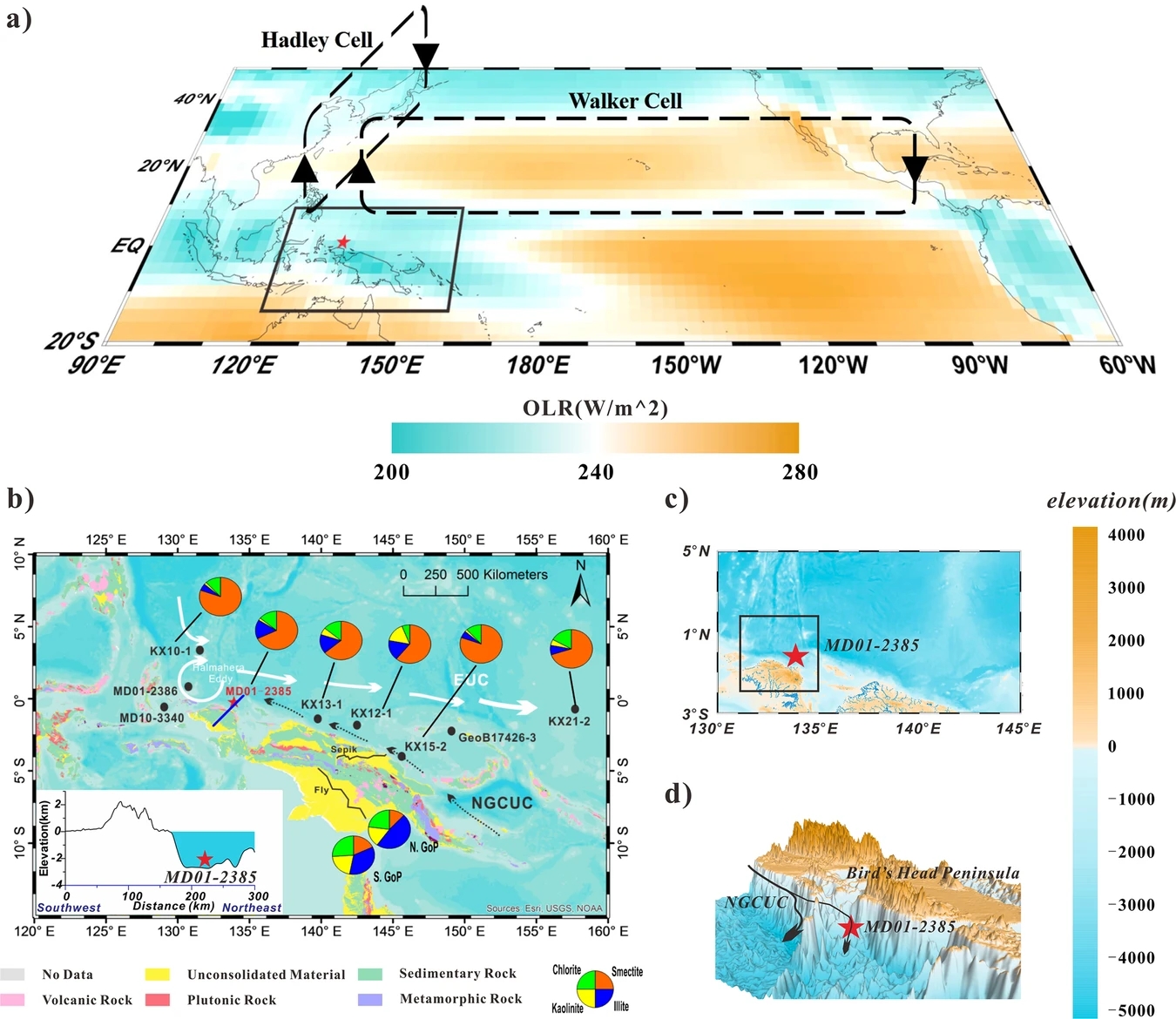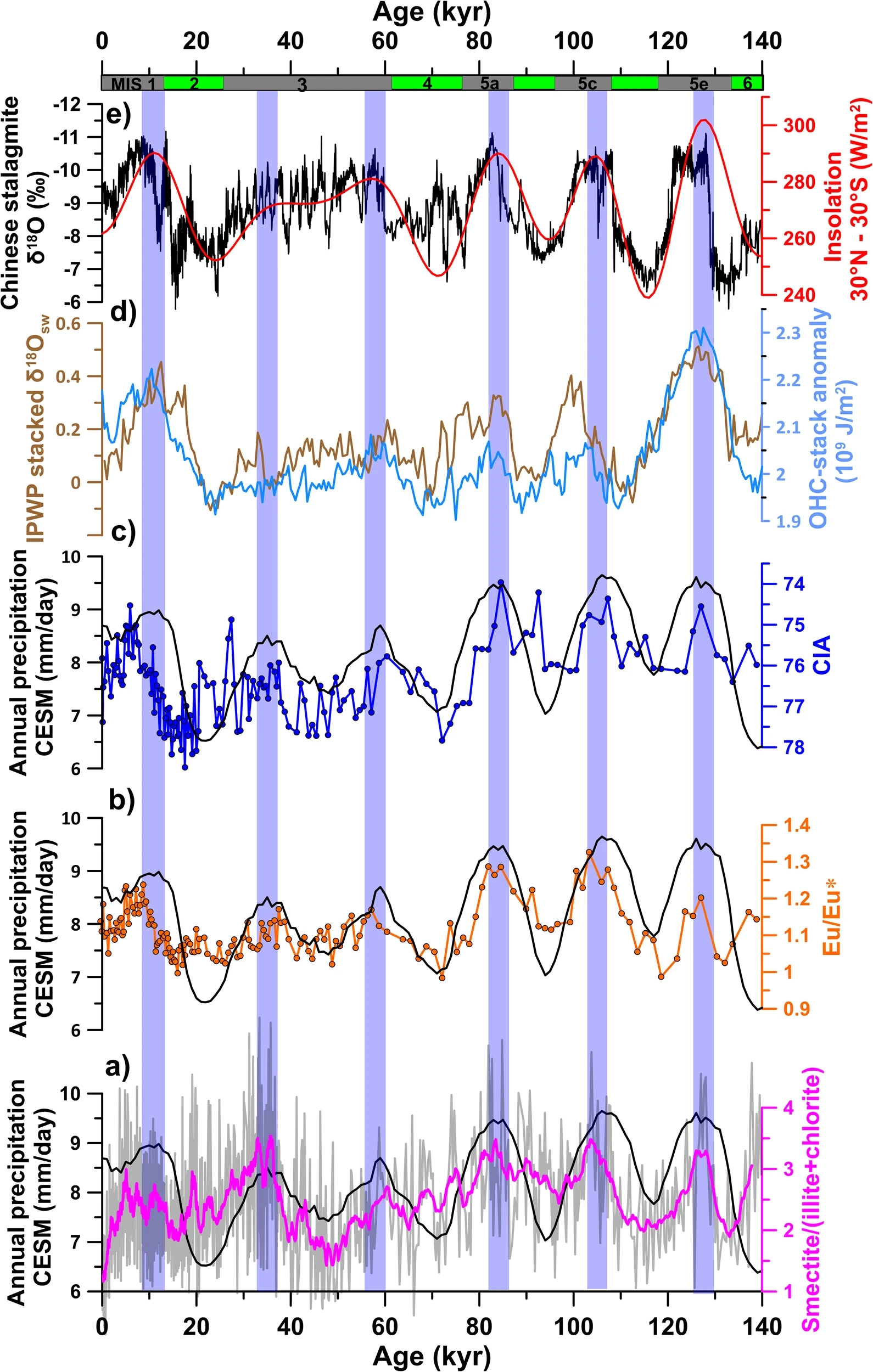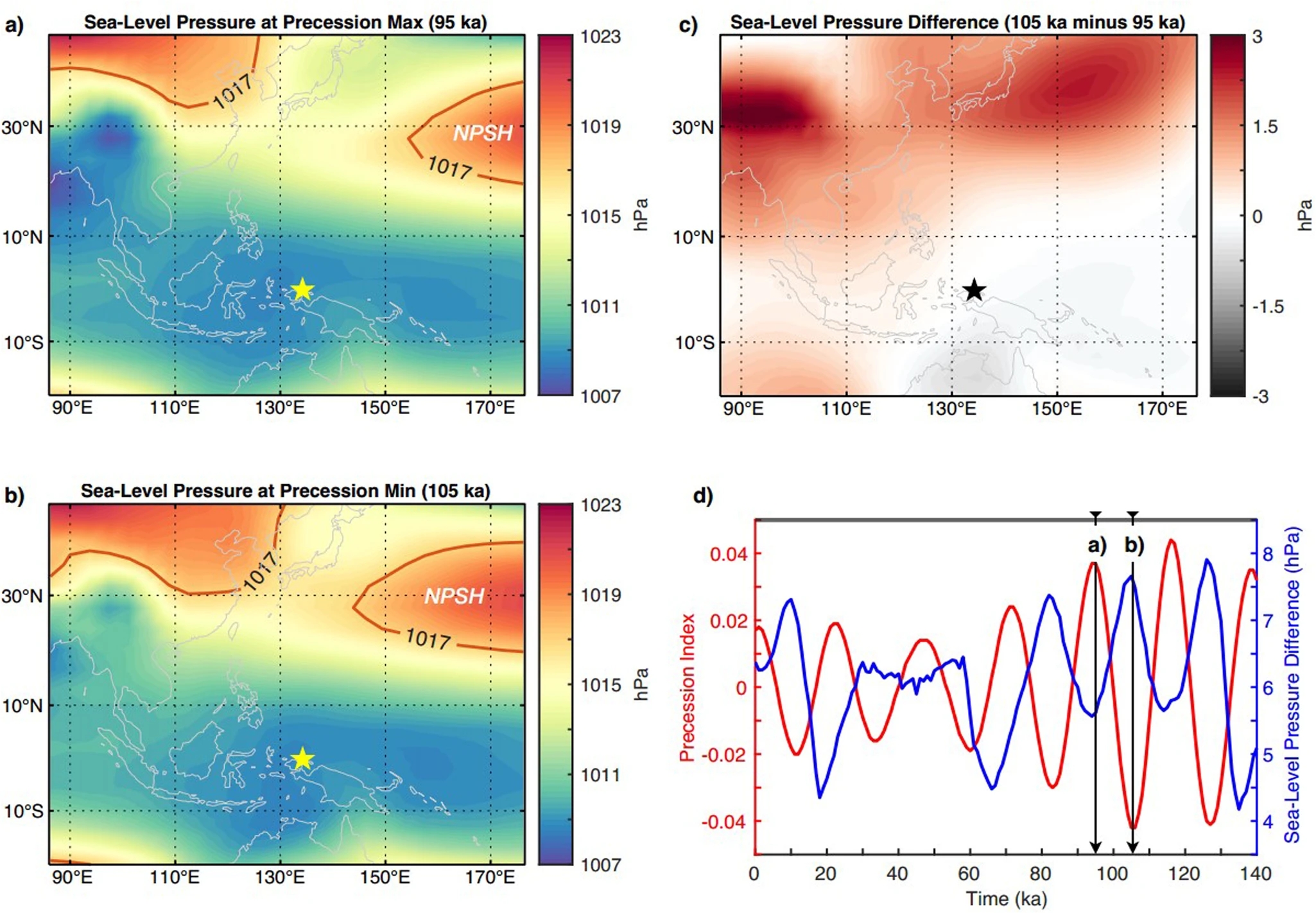
According to a study published in npj Climate and Atmospheric Science on Apr. 18, researchers from China, South Korea, France, the United Kingdom, and the United States have reconstructed the weathering history of the Western Pacific island arc over the past 140,000 years, combined with the simulation results from transient climate models, and revealed the temporal and spatial distribution characteristics of deep convection-precipitation evolution in the warm pool.
The tropical western Pacific island arc is dominated by basalt-ultrabasic basalts. Under the combined influence of the suitable climate (high temperature and heavy precipitation) in the tropical warm pool area and the steep elevation drop of the island (few lowland plains, weathered sediments can't be retained in the basin), the weathering and denudation rate is fast and the impact on the marine environment may be greater than traditionally expected. What are the main mechanisms controlling the weathering of tropical island arcs? How does such a large amount of basalt weathering respond to climate change?
With these questions in mind, the researchers selected core MD01-2385, located in the core area of the Western Pacific Warm Pool, and extracted three mineralogical and elemental geochemical weathering records from northwest of New Guinea Island, to reconstruct the island's weathering history over 140,000 years.
They found that the weathering records of the western Pacific islands show the characteristics of precession cycle control, which is obviously different from the changes of sea surface temperature controlled by eccentricity.
"This phenomenon implies that the weathering record is mainly controlled by the deep convection-precipitation evolution in the warm pool, and therefore can be used to indicate the history of the deep convection-precipitation evolution in the warm pool," said Dr. YU Zhaojie from the Institute of Oceanology of the Chinese Academy of Sciences, first author of the study.
By comparing other records in the warm pool area, the researchers found that although the evolution records of atmospheric deep convection in many warm pools are dominated by the precession period, different records respond to different solar radiation months and have heterogeneity. Results from transient climate simulations also show the existence of this heterogeneity, which is consistent with the modern precipitation distribution.
The records were further compared with the spatial scale of the maximum and minimum of the Western Pacific sea surface pressure gradient inversion revealed by transient climate simulations. They found that deep atmospheric convection in the warm pool could influence the east-west motion of the Western Pacific subtropical high by modulating changes in the Western Pacific sea surface pressure gradient, which in turn could influence changes in the strength of the East Asian summer monsoon.
"Our work reveals the weathering history of the Western Pacific Island Arc over the past 140,000 years through a combination of records and simulations, and reveals a possible link between deep warm pool convection and changes in the mid-latitude Asian summer monsoon," said Dr. YU.

Schematic diagram of research station location and regional environment. (Image by YU Zhaojie)

Weathering records of tropical Western Pacific islands over 140,000 years. (Image by YU Zhaojie)

Changes in the Western Pacific Sea surface pressure gradient at precession maxima and minima simulated by transient climate models (Image by YU Zhaojie)

86-10-68597521 (day)
86-10-68597289 (night)

52 Sanlihe Rd., Xicheng District,
Beijing, China (100864)

